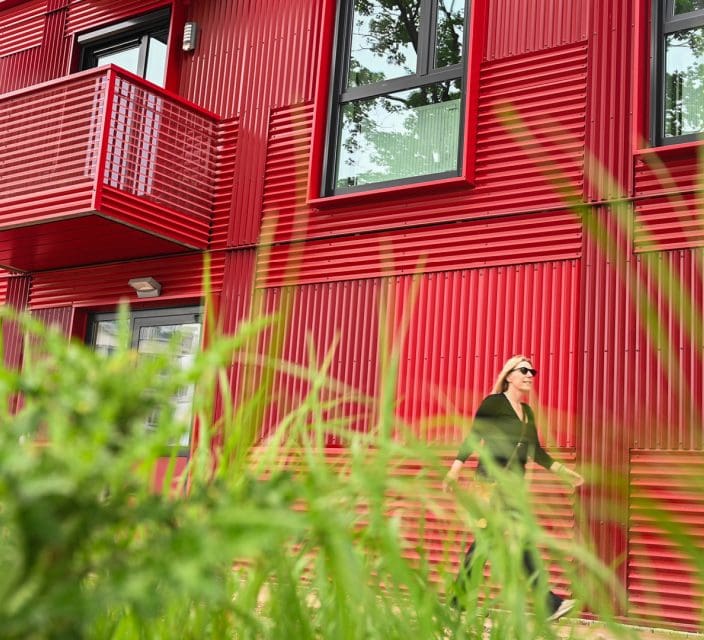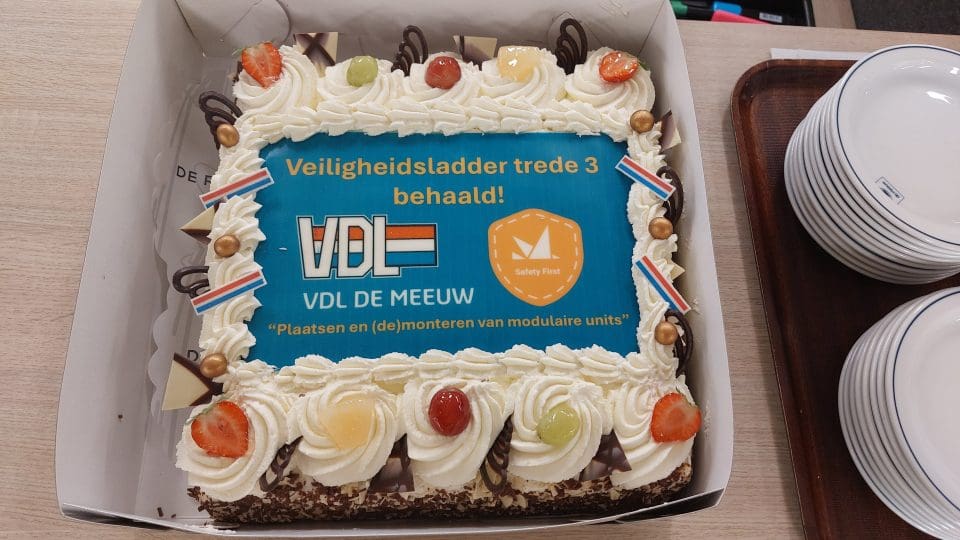Housing With our space concepts, you can create a comfortable facility that serves as a fully-fledged building.
A three-year sprint from idea to key transfer
At Winkelsteeg in Nijmegen, we built 500 flexible housing units in record time to provide comfortable accommodation for over 1,500 people seeking urgent housing.
NDW21

A new city district with plenty of functions
Nijmegen, like the rest of the Netherlands, was facing a housing shortage by the end of 2020. Despite the need for new permanent housing, no permanent site was available for this purpose. Housing associations Talis, Woonwaarts, SSH& and Portaal, supported by the municipality of Nijmegen, therefore decided to opt for temporary housing instead. The location? The Winkelsteeg development area, available for at least 20 to 25 years. The municipality made a best-efforts commitment to organise a second site where the housing units can eventually move.


Short lead time
A new dynamic district emerged in under three years at Nieuwe Dukenburgseweg 21, also known as NDW21. One where you can find some 500 flexible housing units in addition to space to meet up or do business. From student studios to three-bedroom flats, each and every one of them are ready-made flexible housing units that we brought to the Winkelsteeg from our factory in Oirschot. Only the finishing and assembly processes were arranged by our professionals on site. The record time in which we developed the project was due to our smart approach to cooperating with both the municipality and the housing associations.
“A neighbourhood bus connects residents in NDW21.’’
VDL De Meeuw, Joziene van de linde
A new life in the Winkelsteeg
The offer is designed for a diverse target group, with a focus on smaller one- to two-person households. In terms of size, the 489 flats, intended for the social rental and mid-range rental segments, range between 20 and 60 m2. Within this range, 30% is available for refugee status holders. For example, NDW21 offers space for young people, students, first-time buyers and people in urgent need of (temporary) accommodation.
Colour as a common thread
The colourful design by Rotterdam-based Doepel Strijkers Architects brings the area and the seven buildings to life. Thanks to the steel cladding finish with a cheerful colour and playful motif, each building has a character of its own. The interior has also been thought through to the last detail. All homes have been fitted with fibreglass wallpaper, painted white and finished with PVC flooring, Bruynzeel kitchens and sealant-free and seam-free bathrooms. And while the unique buildings add a dynamic flair, the green surroundings make NDW21 a beautiful place to live. Cars? Those are parked at the outer edges of the neighbourhood by residents. This leaves the general area, or the public green space rather, dedicated to social encounters.
A creative breeding ground
NDW21 is more than just a neighbourhood. De Winkelsteeg is transforming into a bustling city district where living, business and socialising go hand in hand. This includes a range of workspaces and studios, and HEEM will soon be showcasing itself at the entrance to the neighbourhood. This creative breeding ground with a focus on green surroundings, health, art and culture, is co-managed by the residents. Combined with the involvement of the neighbourhood and community builder, this provides additional connection and engagement for the district. That’s exactly what NDW21 is all about.
From the outside, there is little difference between modular buildings and traditional structures. In fact, it is actually impossible to distinguish between the appearance of modular flexible housing and traditional real estate. More and more architects are approaching VDL De Meeuw about flexible housing developments. Flexible housing and traditional real estate have to comply with the same requirements. In other words, both comply with the Dutch Environment Buildings Decree (Bbl).
The modules that come together to form the final building are produced in a controlled environment. This ensures a safe working environment with a high level of control over quality and minimal impact on the production process due to weather. This in turn prevents delays and failure costs, and increases control over the overall project. Speed and quality go hand in hand here.
After production, the modules are transported to the site. Once on site, these modules are connected to each other, to the electricity grid, to the sewerage, and so on, and the interior is finished according to the specifications agreed upon. At that point, the building is then commissioned and modified in the future according to any changing requirements.
Brochure
Flexible housing, always the space you need
Download the brochure here.
"*" indicates required fields






